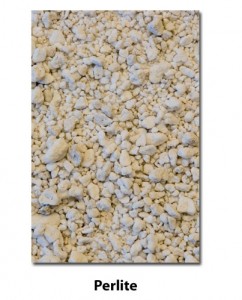 Large, coarse perlite alone may not be the best aggregate for a peat-based growing medium. In general, a mix of different sizes is desirable to provide uniformly distributed air spaces and to avoid the negative aspects of the ‘sand & rocks effect’ or in this case the ‘peat and rocks effect.’ How do sand and rocks relate to a growing medium? You’ve probably seen the demonstration (often used in time management presentations). –Kathryn Louis
Large, coarse perlite alone may not be the best aggregate for a peat-based growing medium. In general, a mix of different sizes is desirable to provide uniformly distributed air spaces and to avoid the negative aspects of the ‘sand & rocks effect’ or in this case the ‘peat and rocks effect.’ How do sand and rocks relate to a growing medium? You’ve probably seen the demonstration (often used in time management presentations). –Kathryn Louis
Read More in The Sun Gro’er Issue 5/1 (2010)
Leer más en The Sun Gro’er Issue 5/1 (2010) Spanish/Español
Tag: Kathryn Louis
The Truth About Soluble Salts
On a greenhouse visit some time ago, I asked a new grower, “What fertilizer rate are you using?” To my surprise he replied, “I don‘t know.” I left the greenhouse fairly concerned, but after some contemplation decided that perhaps I shouldn’t be. Why? Because the fertilizer rate a grower provides to a crop is only one component affecting the crop‘s nutritional status. Factors such as fertilizer source, leaching fraction, irrigation method and plant development stage can dramatically affect the fertilizer rate that is necessary.
–Kathryn Louis
Read More in The Sun Gro’er Issue 5/1 (2010)
Leer más en The Sun Gro’er Issue 5/1 (2010) Spanish/Español
Why Sun Gro Belongs to Trade Organizations
Providing high-quality growing media and fertilizers is no longer the simple business of years past, where we simply produced and shipped products for you to grow flowers and trees. The horticulture industry, like most others, has become a highly regulated business. We now need to fill out mountains of paperwork and often need to respond to new unknown “regulations.” A tool that we have found useful to help us keep up with current regulations is participation in trade organizations.
Read More in The Sun Gro’er Issue 4/1 (2009)
How Using the Correct Soilless Media Will Help Your Success with Tissue Culture Propagation
Tissue culture (also called “in vitro culture” or “micro-propagation”) is one method of cloning plants that is becoming more and more common. In many ways, it is similar to clonal propagation by cuttings; in each method, part of the plant is removed from a stock plant and after a multiplication stage (in an enclosed, sterile environment in the case of tissue culture) is placed in a rooting environment and then acclimated to the real world. Choosing the correct soilless medium for the rooting and acclimation process, ex vitro, can help reduce losses with tissue culture propagated plants.
Read More in The Sun Gro’er Issue 3/2 (2005)
